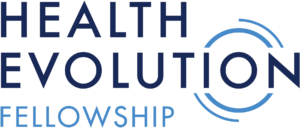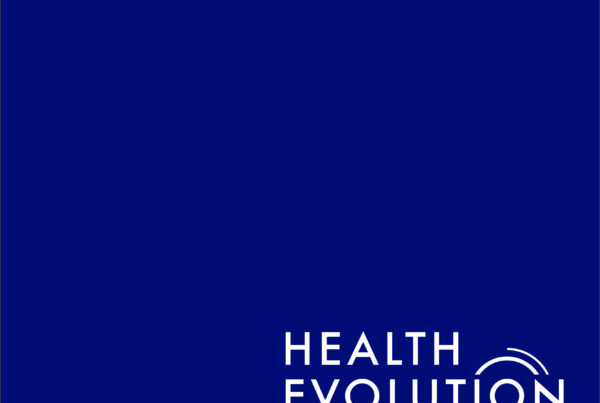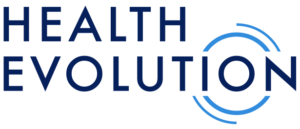Despite increased awareness of health care’s deep-rooted disparities in recent years, many health care organizations have struggled with identifying and addressing inequities among the communities they serve. Organizations must take a data-driven approach to accurately pinpoint disparities and create effective solutions. But knowing how and where to start—and how to drive continued progress—can be difficult.
That’s why Health Evolution in 2022 launched the Health Equity Pledge—a bold, three-year, cross-industry initiative to help organizations meaningfully strengthen data foundations and better identify disparities, diagnose root causes, and instill accountability for eliminating them. At 2024 Connect, leaders at the forefront of these efforts—Tosan Boyo, President of Sutter Health’s East Bay Market; Rachel Thornton, MD, PhD, VP & Chief Health Equity Officer, Nemours Children’s Health; and Kelli Tice, MD, VP, Medical Affairs & Chief Health Equity Officer, GuideWell & Florida Blue—reflected on their public commitment through the Pledge and diligent work to deliver against it.
Why it’s tough to get started: The need for data and a cultural shift
The leaders reflected that launching health equity work often can feel like the biggest hurdle because, in many cases, organizations lack data they can use to identify disparities. Further, Tice noted that some organizations believed they couldn’t—and shouldn’t—ask patients for data that would help them to identify and examine disparities.
Health equity leaders had to work to change the culture around collecting and analyzing data that can illuminate disparities, but it “was not as easy as one, two, three,” Tice said.
For so long, “the conversation about collecting data and stratifying quality metrics by race, ethnicity, language, ZIP codes, etc. to infer socioeconomic status and social drivers of health was a very challenging one, because it was so far removed from what health systems had historically prioritized,” Boyo said. But the COVID-19 pandemic changed that perspective, shining new light on the need for health care organizations “to intentionally and proactively work on eliminating disparities,” he noted.
Tice explained that, during the pandemic, many organizations “did not know” who in their community was “at greatest risk,” and therefore “weren’t set up to very rapidly wrap services around the folks who were highest risk, which created a lot of angst.” That experience made health care executives realize they “needed data to help drive decisions” about where they were allocating resources, she said.
Still, leaders had to ensure staff throughout their organizations “understood the ‘why’ behind” equity work, Boyo said. “We must stay focused on the ‘why,’ because regardless of wherever you are in the United States, no state, no city wants some patients in their community to be sicker, more likely to be admitted to a hospital, and more likely to die than others,” he explained.
Tice added, “A lot of what you have to do initially is capacity building. You have to do road shows to gain momentum. You have to show that all quality conversations, including equity conversations, affect return on investment. Every individual employee needs to understand how equity work shows up in the work that they’re doing.”
Leaders also must recognize that they will uncover disparities and implement a culture of “assuming good intent,” Boyo said. “Disparities exist. We’re not looking to assess whether they’re there, we’re looking to see what we can do to address them.”
Thornton agreed, citing concepts that impact system behavior and systems change. “Collectively, we’d much rather assume the cause of a problem is external vs. inside our systems. It’s tempting to blame something or someone else, to shift responsibility away from ourselves and to look for a ‘silver bullet’—an easy fix—that will make the problem disappear. It is really enticing to think the problem is somewhere else, and it is very difficult and challenges the good intentions and the mission that drives us in health care to be part of the solution.”
How the Health Equity Pledge has helped
That’s why Health Evolution’s Health Equity Pledge has been vital to driving progress. The Pledge is “one of those things that’s very energizing. In many ways, it creates momentum and a platform for leadership” around advancing health equity through data-driven approaches, Thornton said.
The Pledge has pushed organizations to reexamine their beliefs and “created active inertia” to collect and analyze data in new ways to identify care gaps and inequities, Tice said.
Thornton said the Pledge helped move organizations away from simply discussing health inequities to driving change across the industry. “The Pledge is a call to action for organizations to collect data on race, ethnicity, language, and other factors and examine how they’re using that data,” Thornton said. For example, she noted that the Pledge pushed organizations to consider whether they were “approaching our understanding of that data as a system with a unified voice and coming together around a cohesive, comprehensive, systematic way to inform ourselves that would help us to transform.”
“It was a chance for us to really look at the measures we have at our disposal, the vision and impact our organizations want to make, and start to articulate what that transformation actually looks like, what the imperatives are that are going to allow us to make that long-term progress while we take advantage of all the short-term opportunities where we can do better,” Thornton said.
Tice agreed. She noted, “One of the things that became immediately evident” was that, at some organizations collecting data on social drivers of health, there were various points across the organization where there were “different analytics teams, all of whom were applying things just a bit differently and had their own data sets they were working from.” So, there was “no consistency across those multiple teams and systems, and they weren’t comparing things in an intentional manner,” she said.
Leaders learned that they must work to implement an organization-wide approach to using data to identify and address disparities to ensure all facets of the organization are moving in the same direction—and It’s important to get every part of the organization involved in health equity efforts, they said.
Leaders should strive to “build local accountability to achieve solutions,” and every employee across an organization should be able to relate health equity work “directly to the patients they take care of every day or the imperatives they’re trying to achieve every day,” Thornton said. That helps to frame the efforts as “a race to excellence” rather than a critique of the organization and employees’ work, she explained.
“We need to consider what an equity metric means if you are in the support services department. What it means if you work in rehabilitation. How do we make this meaningful for the person who is in environmental services all the way to the perioperative services director?” Boyo said.
“It begins with training,” Tice said, “but it also involves looking at the tools people are using in their daily work. If they are assessing vendor partners for instance, how are they assessing the vendors’ readiness to contribute to equitable outcomes? If you’re redesigning the enterprise strategy, how are you ensuring that equity is cared for?” Tice continued, “Health equity must be an integral part of all work across the organization. This is not philanthropy. It is a business imperative.”
Addressing health disparities takes long-term commitment and collaboration
Although they’ve made progress, the leaders stressed there’s still a lot of work to be done. “There is no end to equity work, so you have to make peace with that,” Boyo said. Instead, organizations should think about success in addressing health disparities as “how well we continue to perfect this work,” he noted.
Tice said leaders must “move to a place where we are thoughtful about what we are doing currently” that could drive disparities. “So current decisions, current actions, closures of clinics and facilities, deciding to terminate a certain line of business—those decisions that are actively being made in our businesses right now, do we stop to think what impact that will have on equity? We need to identify the measures and metrics we should be monitoring and apply this upfront in a better way,” she said.
Further, making large-scale progress on reducing health disparities takes commitment and collaboration from organizations across the health care ecosystem through efforts like the Health Equity Pledge, the leaders said.
“You can’t do quality health care without equitable health care,” Thornton said. “Solving inequities is about how we interact as an ecosystem, how we look at ourselves, and the opportunities we have to push investments to where the most difference in the earliest phase of intervention could achieve the greatest benefit. The Pledge was a great opportunity to be able to elevate the differences in the way we think about the measures that are true indications of health—some of which overlay with what happens in health care delivery and some of which require us to completely think differently about what our role is in the community.”
“The power of the Pledge is that it pushes health care organizations to stratify quality metrics, which is a uniting way to get different stakeholders to come together around this work,” Boyo said. He contended, “I fundamentally believe the Pledge is how we get everyone from all walks of life in health care to prioritize this work. Regardless of if you’re in the delivery system side on the payer side or the life sciences side, there is a pathway to prioritize the metrics and ensure that no disparities exist.”
Learn more from leaders committed to advancing health equity
Health Evolution’s new report, Advancing Health Equity with Data and Bold Commitment, details the transformative journey of the Health Equity Pledge and its more than 50 participating provider, health plan, life sciences, technology, and other organizations from across the health care ecosystem. The report highlights accomplishments, insights, and lessons learned from participants as they conclude the Pledge’s initial phase. It underscores the power of collaboration, innovation, and transparency in driving systemic change and provides a roadmap for sustaining this critical work. Access the report here:











